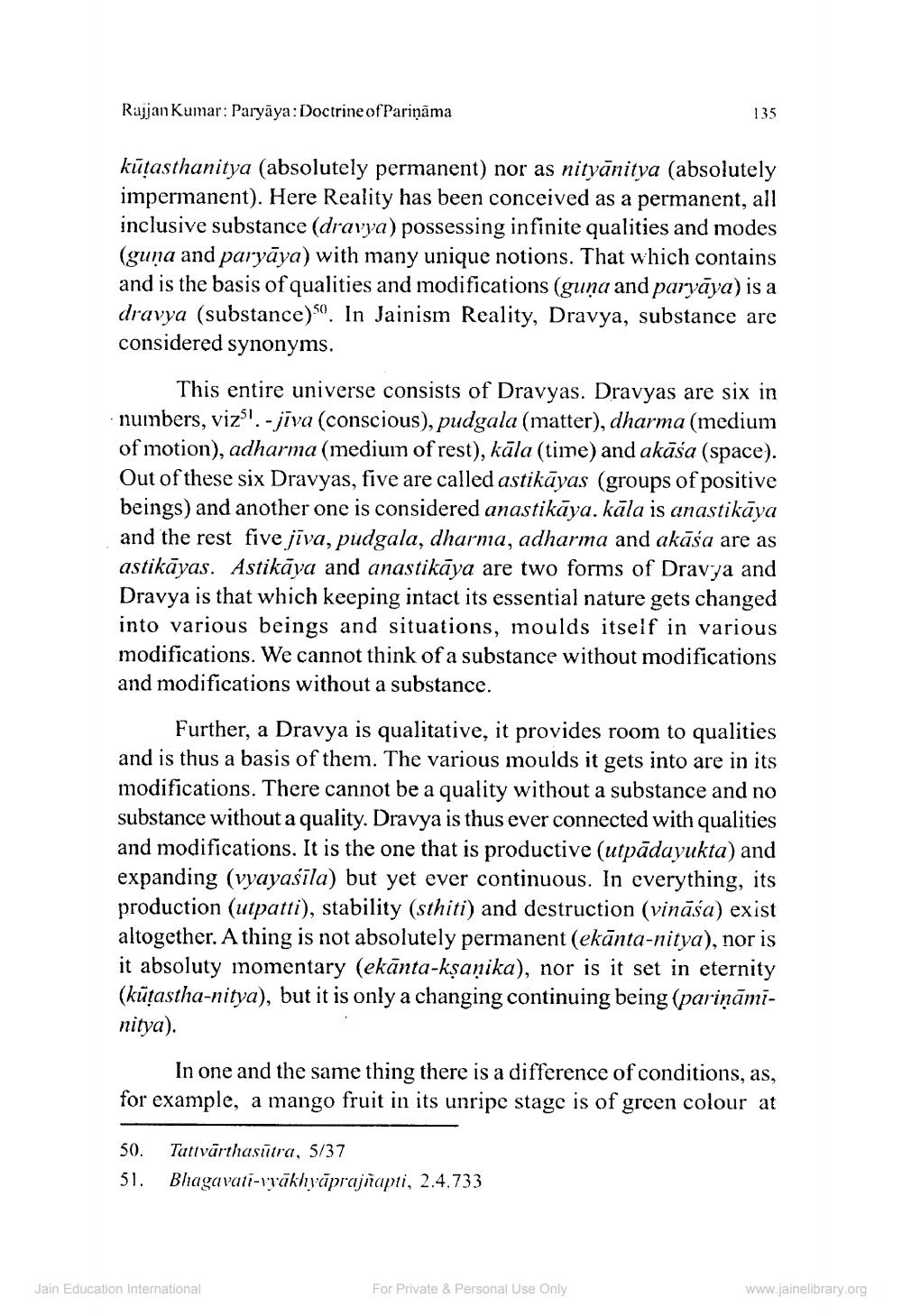________________
Rajjan Kumar: Paryaya: Doctrine of Pariņāma
kūṭasthanitya (absolutely permanent) nor as nityanitya (absolutely impermanent). Here Reality has been conceived as a permanent, all inclusive substance (dravya) possessing infinite qualities and modes (guna and paryaya) with many unique notions. That which contains and is the basis of qualities and modifications (guṇa and paryāya) is a dravya (substance)50. In Jainism Reality, Dravya, substance are considered synonyms.
This entire universe consists of Dravyas. Dravyas are six in numbers, viz. -jiva (conscious), pudgala (matter), dharma (medium of motion), adharma (medium of rest), kāla (time) and akāśa (space). Out of these six Dravyas, five are called astikāyas (groups of positive beings) and another one is considered anastikāya. kāla is anastikāya and the rest five jiva, pudgala, dharma, adharma and akāśa are as astikāyas. Astikaya and anastikaya are two forms of Dravya and Dravya is that which keeping intact its essential nature gets changed into various beings and situations, moulds itself in various modifications. We cannot think of a substance without modifications and modifications without a substance.
Further, a Dravya is qualitative, it provides room to qualities and is thus a basis of them. The various moulds it gets into are in its modifications. There cannot be a quality without a substance and no substance without a quality. Dravya is thus ever connected with qualities and modifications. It is the one that is productive (utpādayukta) and expanding (vyayaśīla) but yet ever continuous. In everything, its production (utpatti), stability (sthiti) and destruction (vināśa) exist altogether. A thing is not absolutely permanent (ekānta-nitya), nor is it absoluty momentary (ekānta-kṣaṇika), nor is it set in eternity (küṭastha-nitya), but it is only a changing continuing being (pariņāminitya).
135
In one and the same thing there is a difference of conditions, as, for example, a mango fruit in its unripe stage is of green colour at
50.
51.
Tattvärthasutra, 5/37 Bhagavati-vyākhyāprajñapti, 2.4.733
Jain Education International
For Private & Personal Use Only
www.jainelibrary.org




